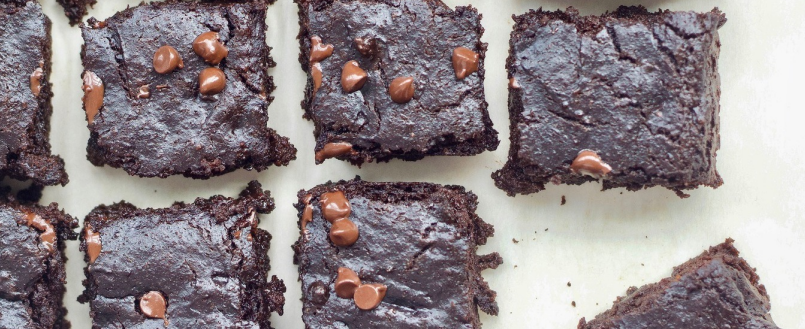
Get to know healthy sugars and enjoy the sweet things in life
Are you someone who is trying to cut down on sugar and would love to have a sweet treat, but you are not sure what you can eat? Is the sweet treat aisle of the grocery store daunting because of the labelling of foods? Is the treat with “no added sugar’ good to eat or better to avoid? Are all sweet treats good or bad for you? When you have a sweet treat in front of you, do you avoid it or eat it because it is sweet? This week, I will be looking at the difference between artificial sweeteners and more natural sweeteners such as honey and maple syrup and discussing the benefits of making your simple sweet treats which are so much better for you and your health.
I find that there is the perception that enjoying and eating a sweet treat is bad for you, we often hear people talk about their guilty pleasure when it comes to sweet treats as if there is something wrong about wanting to eat something sweet. If you stop to think about the first thing that we ate as a baby was breastmilk, that contains lactose, which is a natural sugar found in milk, you could almost say that it is in your DNA, to search out foods that are sweet in flavour.
Eliminating everything sweet from our diets is not always the right way, I think it is more about pivoting our approach to sweet treats (and I think food in general) and understanding the real value of eating good food. Nature has always been ahead of the game; sweetness is all around us in the fruits and vegetables that we eat. When you enjoy a bowl of strawberries or bite into a ripe apricot, there is no guilt or remorse, we enjoy these sweet foods. The more we use natural and whole foods in our diets, you will find yourselves benefiting from having more energy and generally feeling better. “Sweetness is not in itself unhealthy, we simply eat only the most unhealthy kind of sweetness” – Guilia Enders1 – this is so true. I often find that clients are confused and uncertain about what to eat and what to leave well alone.
Firstly, let us look at sugar and other refined sweeteners. Sugar is made from sugar cane or sugar beets other than being sweet it has no other nutritional value – no vitamins, minerals, or fibres – it is just an empty calorie. Whether it is used in baking or just to sweeten your coffee the nutritional value does not change. We then have quite a choice of sweeteners available to us, such as saccharin, which is an artificial sweetener derived from petroleum so as not to be used by pregnant or nursing mothers and young children. There is also stevia which is made from stevia rebaudiana Bertoni plant and is about thirty times sweeter than sugar; and sorbitol which is a sugar alcohol. There are many others such as maltodextrin, corn syrup, brown rice syrup, the list does go on! These sweeteners are all by manufacturers when they produce foods and sweet treats not only because of the flavour they provide but they also prolong the shelf life of the product, which is why so many ‘hidden sugars’ are used in many processed foods. We know really that the muffin we buy from the store in a package is not very fresh at all.
Secondly, food such as honey and maple syrup which can also be used as sweeteners, the difference being, they have not been refined and still contain certain vitamins and minerals which gives them a nutritional value in our diet. Honey is a source of iron, potassium, and zinc as is maple syrup.
So for people who are type 2 diabetic or trying to reduce their sugar intake, finding their way around the sweet section of the grocery store can be highly stressful, as items are often labelled as having ‘no added sugar’ or ‘zero calories’ but on a closer look, there are still many hidden sugars, which we mentioned that are present in the list of ingredients. However, knowing how to navigate through the labels can take the stress out of things, I always check the ingredients list to see what is really in the sweet treat.

We know that a high intake of sugar causes many health issues, but this does not mean that we cannot indulge with some sweet treats. I find the best option is to make your own, although there many small local bakeries, who are very aware of this issue make sure that they used natural products. When making our own sweet treats, not only do we allow ourselves to enjoy the food and not feel guilty about eating something nice and sweet but it is also an opportunity to feed our bodies with plenty of good things. This avocado brownie recipe is truly delicious and has a very decadent texture and flavour to it. I will quite happily indulge in few pieces, as the avocado is a great source of healthy fats, which are vital for the immune system; fibre in the almond flavour, which helps to feed the good bacteria in your gut; and protein in the eggs which help to repair and maintain our body.
Knowing that you are not only making something good for you and your family but also helping them to be more aware of they are eating is so important. Sitting down and sharing a sweet treat with friends and family means so much more when you have made it yourself. It is also about sharing and passing down recipes that will be made by future generations to enjoy.
Send your nutrition questions to susan@susanalsembach.com
1. Giulia Ender, GUT – The Inside Story of our Body’s Most Underrated Organ (2015)
Header Photo: Toa Heftiba, Unsplash









